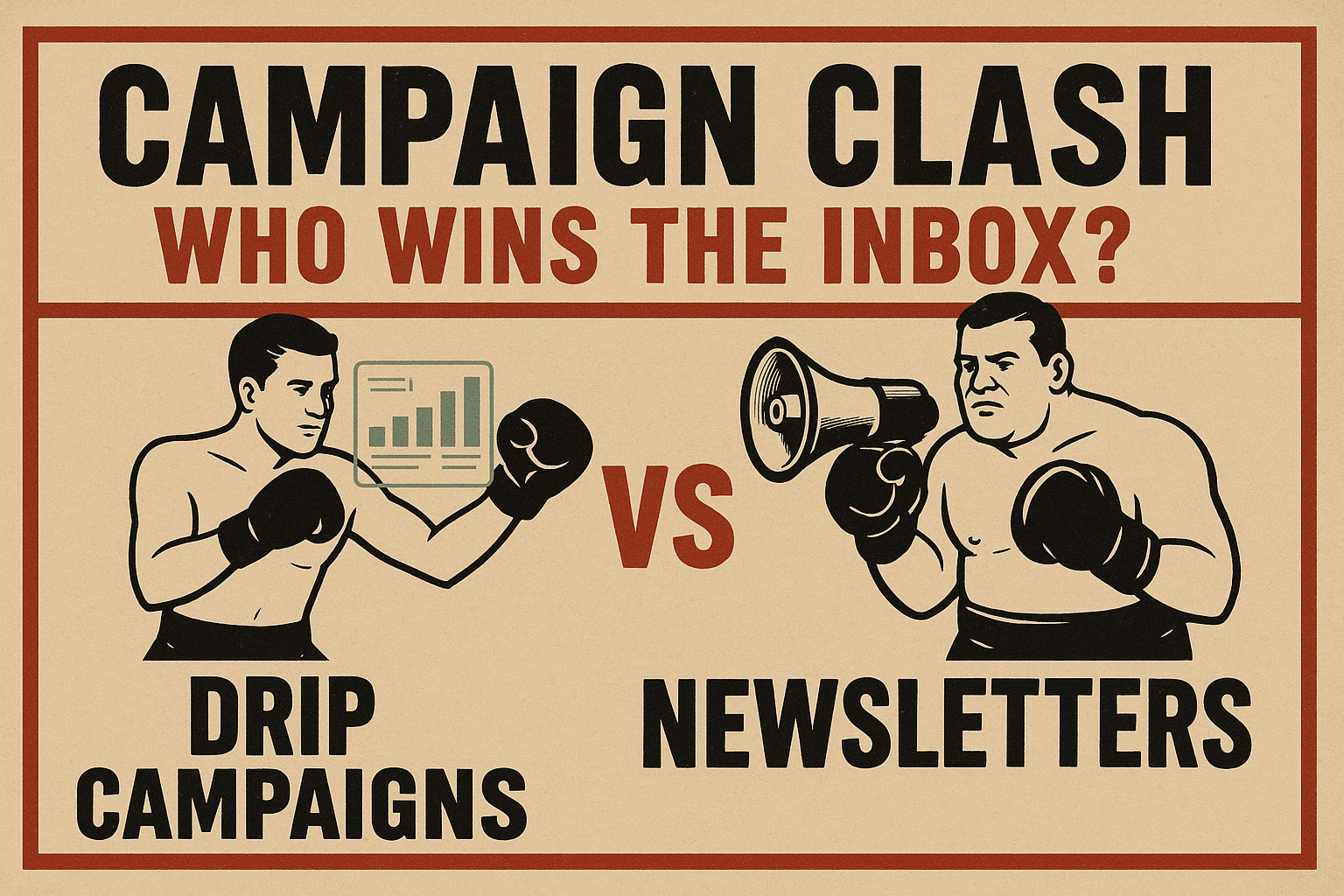Email marketing is a foundational strategy for early-stage startups to build brand awareness, nurture leads, and drive customer engagement. Two core approaches—email drip campaigns and regular newsletters—differ fundamentally in their objectives, structures, and return on investment (ROI). Understanding these differences is essential for startups seeking to maximize the impact of their email outreach.
Objectives
Email Drip Campaigns
Drip campaigns are a series of automated emails sent based on specific triggers or over set timeframes. Their primary objectives are:
- Lead Nurturing: Progressively educate and guide leads toward conversion by targeting their needs and behaviors at each stage of the funnel.
- Personalization at Scale: Tailor content based on user actions (sign-ups, downloads, purchases) to enhance engagement.
- Timely Communication: Ensure customers receive relevant information just when they need it, such as onboarding sequences or abandoned cart reminders.
Example: A health-tech startup used drip campaigns to onboard users with educational emails about product features, resulting in a 40% increase in retention rates .
Regular Newsletters
Newsletters are typically sent to the entire subscriber list at regular intervals (weekly, monthly, etc.). Their objectives include:
- Ongoing Engagement: Keep subscribers informed and engaged with company updates, curated content, or special offers.
- Community Building: Foster a sense of connection and anticipation among subscribers with consistent communication.
- Brand Awareness: Reinforce brand presence and trust through informative and value-driven content.
Example: A content platform startup grew their subscriber base and website traffic significantly by prioritizing high-quality newsletters .
Structures
Email Drip Campaigns
- Automated Sequences: Pre-written emails are set up in advance, triggering delivery based on subscriber actions or milestones.
- Personalized Messaging: Content often adapts to user behavior, incorporating data such as past purchases, browsing patterns, or onboarding stages.
- Time-bound and Event-triggered: Emails are sent at optimal intervals or in response to specific events, such as user registration or product trial expiry.
Key Metrics: Open rates, click-through rates (CTR), conversion rates, bounce rates, unsubscribe rates, subscribers who completed the sequence .
Regular Newsletters
- Batch Communication: Newsletters are curated and sent to the entire list or targeted segments at set intervals.
- Generalized Content: While segmentation is possible, content is usually less personalized than drip campaigns.
- Consistency in Schedule: Subscribers expect and anticipate regular updates, which can increase open rates and foster loyalty.
Key Metrics: Open rates, CTR, conversion rates, bounce rates, unsubscribe rates, total recipients, total opens/clicks .
ROI Comparison
Drip Campaigns
Drip campaigns typically demonstrate higher ROI for startups seeking conversions and customer retention due to their personalization and sequencing:
- Higher Engagement: Tailored emails lead to better open and click rates. Reports show that triggered emails like drips can deliver up to 152% higher CTR than regular newsletters .
- Improved Conversion Rates: Personalization and timely messaging drive recipients toward specific actions (e.g., purchases, sign-ups).
- Retention Benefits: Automated onboarding or feature education increases customer satisfaction and retention, as evidenced by a 40% retention improvement in the health-tech example .
Regular Newsletters
Newsletters are more cost-effective for broad engagement and brand-building, though individual ROI may be lower compared to well-optimized drip sequences:
- Subscriber Growth: Consistent, high-value newsletters can drive steady growth in the subscriber base and site traffic, as seen with the content platform startup .
- Ongoing Engagement: While conversion rates per email may be lower, newsletters maintain long-term engagement and reinforce brand trust.
- Lower Setup Complexity: Newsletters are easier and faster to produce than sophisticated drip sequences, reducing upfront resource investment.
General Industry Benchmarks:
- Open Rates: ~19.21%
- CTR: ~2.44%
- Conversion Rates: ~12.04%
- Unsubscribe Rates: ~0.82%
Rates vary by sector, with SaaS and technology typically achieving higher opens/CTR than retail/e-commerce .
Startup-Specific Considerations
- List Size & Variability: Early-stage startups may observe greater fluctuations in benchmark metrics due to smaller, less familiar audiences .
- Testing and Analytics: Platforms like Mailchimp provide robust, comparative reporting tools for both approaches, enabling data-driven campaign optimization .
- Resource Allocation: Drip campaigns often require more upfront setup and content development but yield higher targeted ROI, whereas newsletters demand regular content creation but support broad brand-building.
Comparative Summary Table
| Aspect | Drip Campaigns | Regular Newsletters |
|---|---|---|
| Primary Goal | Lead nurturing, conversion, retention | Ongoing engagement, awareness, community |
| Structure | Triggered, automated sequences | Regular, batch sends |
| Personalization | High (behavior-based triggers and content) | Moderate to low (mostly segment-based) |
| Frequency | Based on user actions or timelines | Scheduled intervals (weekly, monthly) |
| ROI Potential | Higher per user due to personalization | Broader engagement, lower per-email ROI |
| Metrics | Opens, CTR, conversion, unsubscribes, sequence completion | Opens, CTR, conversions, unsubscribes, list growth |
| Reporting Tools | Automation and sequence analytics | Campaign and comparative reports |
Conclusion
For startups, email drip campaigns excel at driving targeted conversions and nurturing leads through personalized, timed communication. They deliver higher per-user ROI, particularly effective for onboarding, education, and re-engagement. Regular newsletters complement this by sustaining long-term engagement, building brand awareness, and fostering community at scale. The ideal approach depends on the startup's current goals, resources, and the desired balance between broad communication and individualized outreach.
Leveraging analytics platforms such as Mailchimp enables startups to monitor, compare, and optimize both email strategies continuously, ensuring maximum efficiency and impact from their email marketing investments .

